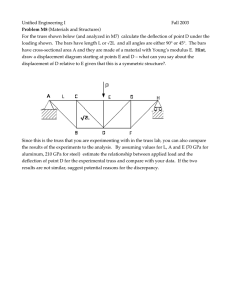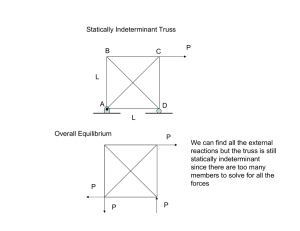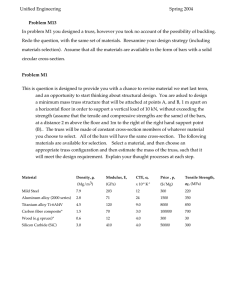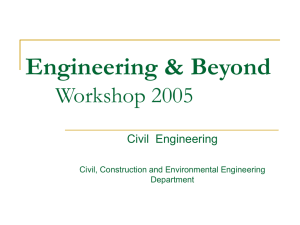Unified Engineering Spring 2004 Problem M1
advertisement
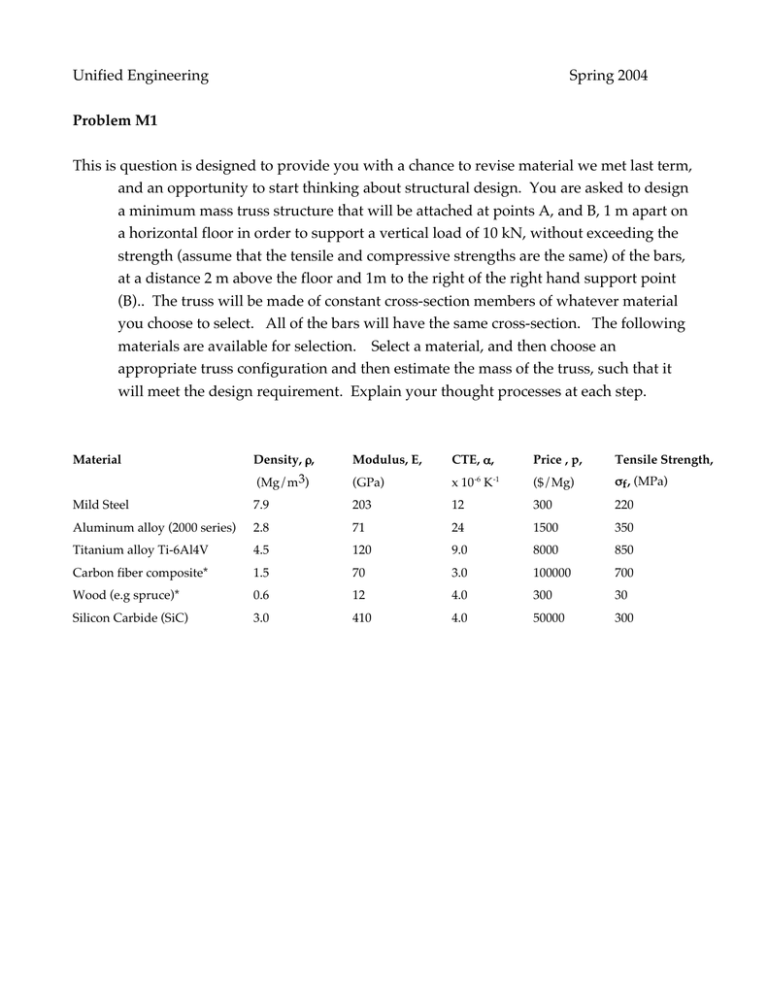
Unified Engineering Spring 2004 Problem M1 This is question is designed to provide you with a chance to revise material we met last term, and an opportunity to start thinking about structural design. You are asked to design a minimum mass truss structure that will be attached at points A, and B, 1 m apart on a horizontal floor in order to support a vertical load of 10 kN, without exceeding the strength (assume that the tensile and compressive strengths are the same) of the bars, at a distance 2 m above the floor and 1m to the right of the right hand support point (B).. The truss will be made of constant cross-section members of whatever material you choose to select. All of the bars will have the same cross-section. The following materials are available for selection. Select a material, and then choose an appropriate truss configuration and then estimate the mass of the truss, such that it will meet the design requirement. Explain your thought processes at each step. Material Density, r, (Mg/m3) Modulus, E, CTE, a, Price , p, Tensile Strength, (GPa) x 10 -6 K-1 ($/Mg) sf , (MPa) Mild Steel 7.9 203 12 300 220 Aluminum alloy (2000 series) 2.8 71 24 1500 350 Titanium alloy Ti-6Al4V 4.5 120 9.0 8000 850 Carbon fiber composite* 1.5 70 3.0 100000 700 Wood (e.g spruce)* 0.6 12 4.0 300 30 Silicon Carbide (SiC) 3.0 410 4.0 50000 300 Note. Although the design objective is to minimize the mass of the structure, the credit for the question will be based on demonstrating a logical approach to selecting a material and a truss configuration, and then obtaining an estimate for the mass of the truss. Do not spend more than an hour on this question, and do not analyze multiple truss configurations. A useful exercise is to estimate what you think the mass of the truss will be before you do any analysis - developing an intuition for the correct size for structures is a useful skill to cultivate. 2


